When it comes to baking and cooking, precision is essential. Often, recipes call for ingredients in specific measurements, and understanding the relationship between cup and ounce is necessary for any home chef.
Two of the most common cooking measurements are cups and ounces.
Learning to convert between them easily can save time and prevent baking disasters!
We'll review the fundamentals of the cup-to-ounce conversion in this post, giving you thorough explanations and real-world examples and a helpful conversion chart for quick and easy reference.
- Understanding Cups and Ounces
- Conclusion
- FAQs
- 1. What is the basic conversion factor for liquids when converting cups to ounces?
- 2. How do you convert cups to ounces for dry ingredients like flour or sugar?
- 3. How has the concept of the cup as a unit of measurement evolved?
- 4. Why is it crucial to differentiate between fluid ounces and dry ounces when dealing with measurements in the kitchen?
Understanding Cups and Ounces
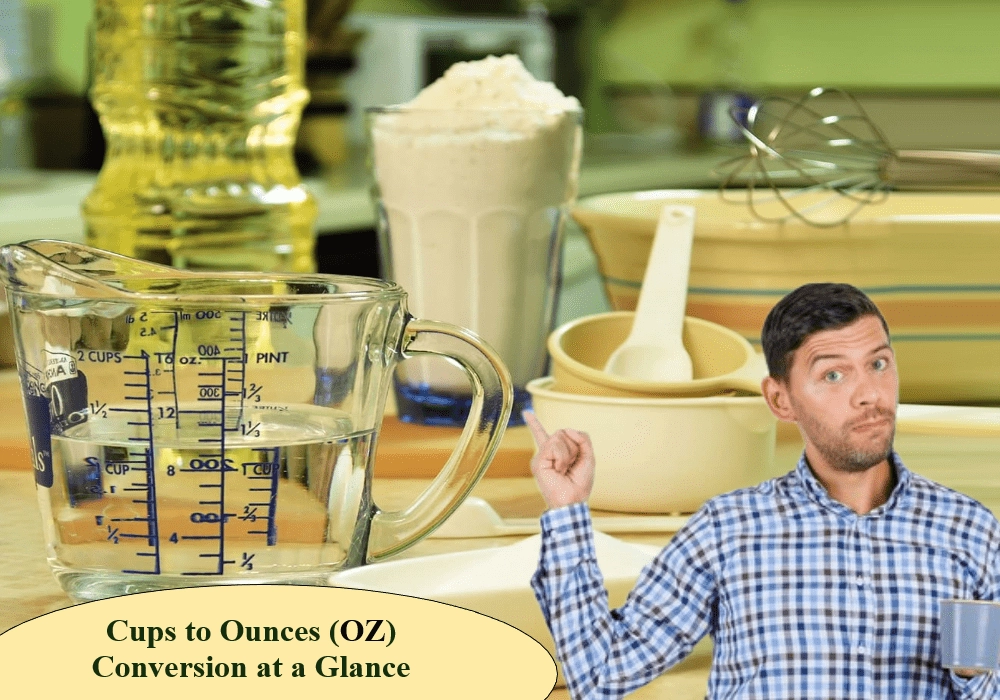
Are units of measurement used to measure volume and weight, but they are used in different contexts.
A cup is a customary unit used to measure volume, equal to 16 tablespoons, 1/2 pint, 1/4 quart, or 8 fluid ounces (240 ml). Cups are often used to measure ingredients in recipes and beverages such as coffee, tea, and juice.
Cups are also commonly used as a standard serving size for food items such as cereal, yogurt, and pasta.
To adjust your recipes easily, it is essential to understand liquid measurement conversions such as 1 fluid ounce = 2 tablespoons and 1 cup of liquid = 8 fluid ounces (240 ml).
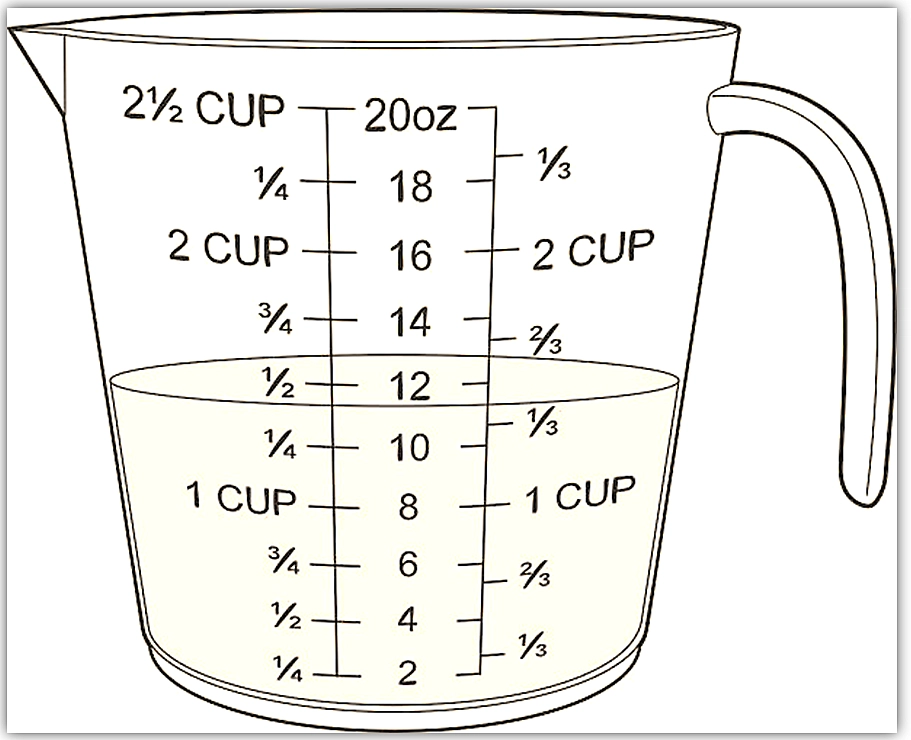
(abbreviated fl oz, fl. oz. or oz. fl.) is a unit of volume equal to 1/8 of a cup. Ounces are often used to measure smaller amounts of liquids, such as spices, extracts, and medications.
Ounces are also used to measure the weight of small objects, such as jewelry and coins.
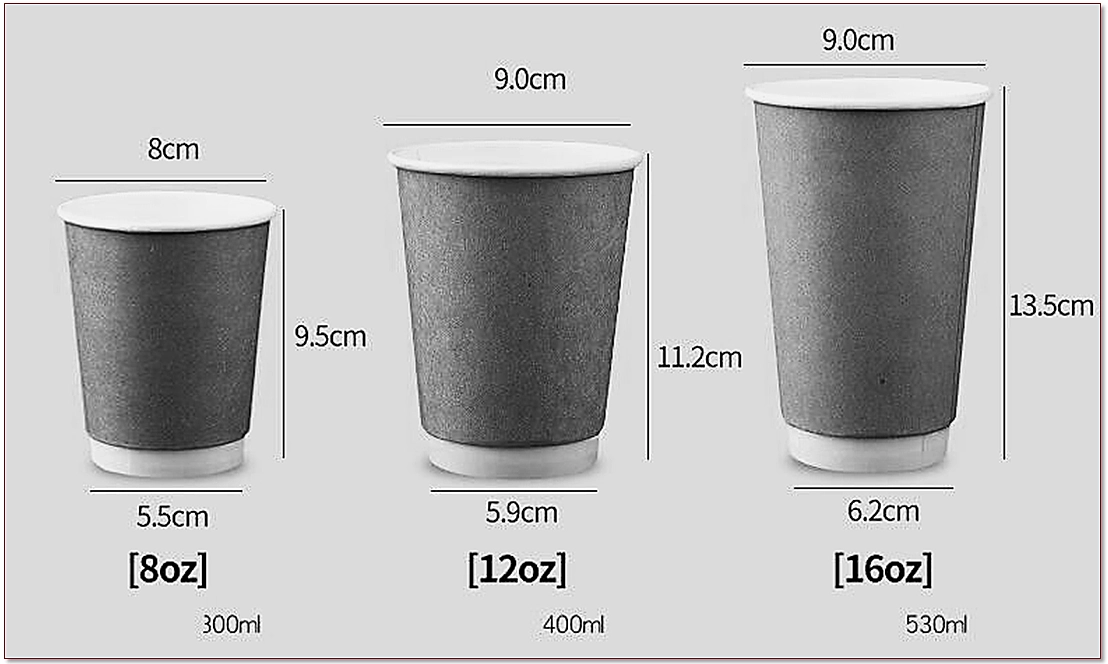
It is commonly used in cooking to measure liquids and powdery substances. On the other hand, an ounce is a unit of weight that is equal to 1/16 of a pound or 28.35 grams.
It measures the weight of various items, such as food, jewelry, and precious metals.

1. The Math Behind Cup and Ounce Conversions
Since 1 cup equals 8 fluid ounces, converting between the two units is simple with basic math.
To convert cups to fluid ounces, multiply the number of cups by 8.
For example: 2 cups × 8 = 16 fluid ounces.
To convert fluid ounces to cups, divide the number of ounces by 8.
For example: 32 fluid ounces ÷ 8 = 4 cups.
However, always remember to check whether you’re dealing with fluid ounces (volume) or ounces (weight), as mixing them up can lead to conversion errors.
INGREDIENTS | CUP (c) | OUNCES (oz) | GRAMS (g) |
Flour | 1 cup | 4 ⅖ to 4 ½ oz | 125 to 127 g |
Baker’s Special Sugar (superfine sugar, castor sugar) | 1 cup | 6 ¾ oz | 190 g |
Sugar (granulated white) | 1 cup | 7 oz | 200 g |
Packed Brown Sugar (light or dark) | 1 cup | 7 ½ oz | 213 g |
Cheese (coarsely grated cheddar, jack, mozzarella, or Swiss) | 1 cup | 4 oz | 113 g |
Butter | 1 cup | 8 oz | 227 g |
Baking Powder | 1 tsp | 0.16 oz | 4 g |
Baking Soda | ½ tsp | 0.081 oz | 3 g |
Almond Flour | 1 cup | 3 1/8 oz | 96 g |
Whole Almonds | 1 cup | 5 oz | 142 g |
Chocolate Chips | 1 cup | 6 oz | 170 g |
Chocolate Chunks | 1 cup | 6 oz | 170 g |
Cacao Nibs | 1 cup | 4 ¼ oz | 120 g |
Fresh Blueberries | 1 cup | 5 to 6 oz | 140 to 170 g |
Crushed Graham Crackers | 1 cup | 5 oz | 142 g |
2. Methods of Conversion
Conversion Factors The primary conversion factor for liquids is that 1 cup equals 8 fluid ounces. Therefore, to convert cups to ounces, multiply the number of cups by 8. For example, 2 cups of water would be 16 fluid ounces.
2 cups x 8 fl oz/cup = 16 fl oz

Dry Ingredients The conversion may differ when dealing with dry ingredients like flour or sugar. Generally, 1 cup of dry ingredients is approximately 4.5 ounces. To convert cups to ounces for dry ingredients, multiply the cups by 4.5.
Online Converters: In the digital age, online converters have made our lives easier. Numerous websites and apps provide instant cup-to-ounce conversions. Input the quantity in cups, and voilà – the ounces are displayed.
Try our cups-to-ounce converter. Examples of how cups and ounces are used in everyday routine In day-to-day life, cups and ounces are used in various ways.
For instance, cups are used to measure the amount of coffee or tea we drink, while ounces are used to measure the weight of fruits and vegetables we buy from the market.
You must often measure ingredients in cups and ounces when following a recipe. For example, a recipe might call for 1 cup of flour, 1/2 cup of milk, and 1/4 teaspoon of salt.
When brewing coffee, you typically use a coffee mug holding 8 ounces of liquid.
When taking a liquid medication, you will typically use a measuring spoon or cup to measure the dose.
For example, a prescription might call for 2 tablespoons of medication taken thrice daily.
You should measure ingredients in ounces when making a homemade face mask.
For example, a recipe might call for 1 ounce of honey, 1 ounce of yogurt, and 1/2 ounce of oatmeal.
When you are buying jewelry, the weight of the piece will often be given in ounces.
For example, a pair of earrings might weigh 1/4 ounce each.
3. How do you convert cups to ounces for cooking and baking?
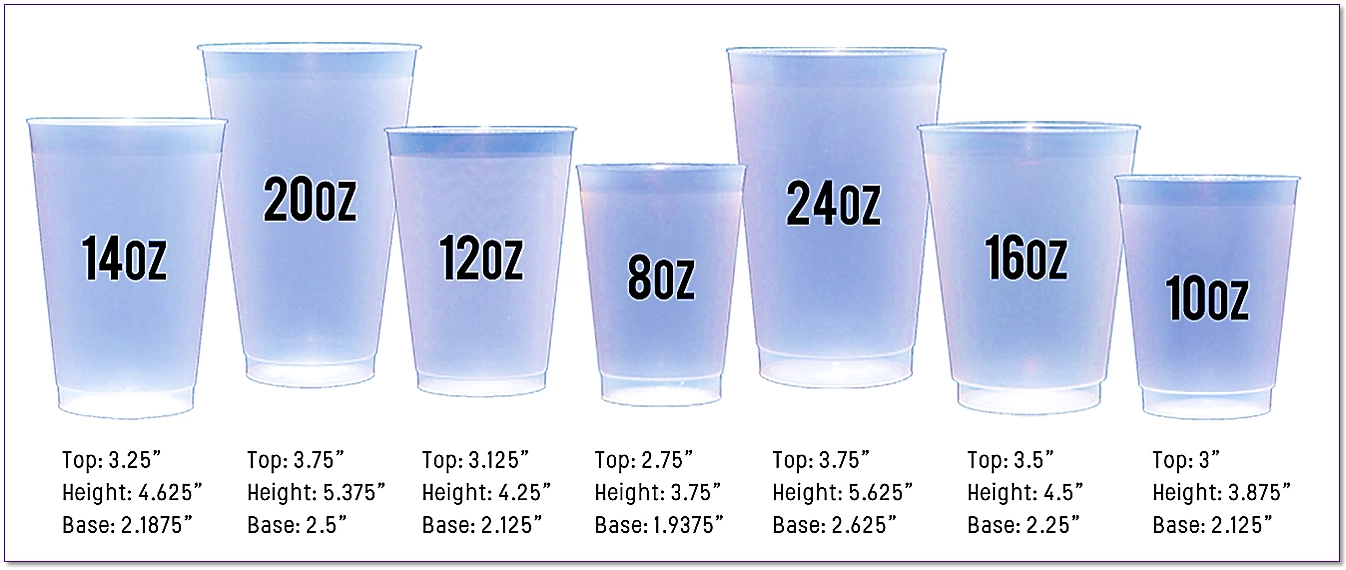
Liquid Conversion Imagine you're preparing a refreshing smoothie, and the recipe calls for 3 cups of orange juice.
To determine how many ounces that is, you multiply 3 cups by 8 fluid ounces per cup, resulting in 24 fluid ounces.
3 US cups ⨯ 8 ounces = 24 US cup ounces
Dry Ingredient Conversion Now, suppose you're baking cookies, and the recipe requires 2 cups of all-purpose flour.
To convert this to ounces, multiply 2 cups by 4.5 ounces per cup, yielding 9 ounces of flour.
2 US cups * (4.5 ounces / US cup) = 9 ounces
Baking
A chocolate chip cookie recipe calls for 1 1⁄4 cups (10 ounces) of chocolate chips. But you only have a 12-ounce bag. Quick conversion tells you that’s equal to about 1 1⁄2 cups – perfect!
Bulk shopping
That enormous 10-pound bag of rice is a great deal, but how many cups is that?
10 lbs = 160 oz. Then 160 oz /8 oz per cup = 20 cups of rice
Precision scaling
A bread recipe says to proof yeast with 1 cup 120°F – 130°F water. You want to warm the water on a kitchen scale to exactly 125°F rather than estimating.
1 cup = 8 oz So, you’d weigh out 8 oz of water to heat up.
Unexpected substitutions
You thought you had vegetable oil, but the only option left is sesame oil. No problem! You need 1 cup vegetable oil, which equals 8 oz. Using your scale, measure out 8 oz sesame oil instead.
Handy Conversion Tips
➤ Use measuring cups and kitchen scales - Using actual measuring cups and food scales instead of guesstimating makes a huge difference in accuracy.
➤ Stick to recipes from trusted sources - Some older cookbooks sometimes have errors in their listed measurements. Stick to recipes from well-tested cookbooks or experts to reduce the risk of conversion issues.
➤ Round up or down appropriately - During liquid-to-solid conversions, it’s usually safe to round to the nearest whole number. But avoid excessive rounding when precision matters more (like with baking).
➤ Check your conversions - Use unit cancellation to double-check your work. For example, if you calculate that 3 cups of flour is 12 ounces, reversing the math should give you back 3 cups.
US cups | US fl oz | UK imperial | UK ml |
1/8 cup | 1 fl oz | 2 tbsp | 30 ml |
¼ cup | 2 fl oz | 4 tbsp | 60 ml |
1 /3 cup | – | 5 tbsp | 75 ml |
½ cup | 4 fl oz | 4 fl oz | 125 ml |
2/3 cup | – | 5 fl oz ¼ pint | 150 ml |
3/4 cup | 6 fl oz | 6 fl oz | 175 ml |
1 cup | – | 9 fl oz | 250 ml |
– | 10 fl oz | 10 fl oz ½ pint | 300 ml |
2 cups | 16 fl oz = | 16 fl oz | 450 ml |
1 US pint | |||
– | – | 20 fl oz = 1 UK pint | 500 ml |
3 cups | – | 1 ¼ – 1 ½ pints | 750 ml |
4 cups | 32 fl oz = | 1 ¾ pints | 1 litre |
2 US pints |
4. Do you know these fun facts About Cups and Ounces
The first measuring cups were invented in the late 1800s by Fannie Farmer, a famous American chef and cookbook author.
The cup as a defined cooking measurement was formally adopted in the United States in the late 19th century. Before that, recipes called for less precise things like "teacups" or "wineglasses" full of ingredients.
"Ounce" comes from the Latin word "uncia," which means one-twelfth. This is because an ounce was originally defined as one-twelfth of a Roman pound. This is why you still frequently see ingredients measured in 1⁄4 or 1⁄2 ounces today.
Even once formally defined, cups as a measurement weren’t standardized. It wasn’t until 1959 that U.S. federal law firmly described a measuring cup as equal to 8 fluid ounces.
The first measuring cups were made of tin, but today they are made of plastic, glass, or stainless steel.

The standard size of a measuring cup is 8 ounces, equivalent to 1 cup.
It's crucial to note the difference between fluid ounces and dry ounces. While 1 cup of water equals to 8 fluid ounces, 1 cup of flour may weigh around 4.5 dry ounces. This disparity is due to the varying densities of different substances.
The U.S. customary measurement system uses cups and ounces, while the metric system uses milliliters and grams.
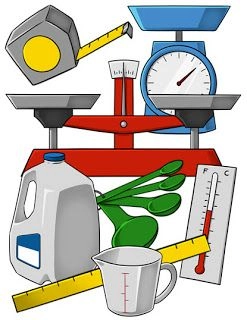

Conclusion
Mastering cup-to-ounce conversion is a valuable skill for any home chef or baker. Whether following a recipe or improvising in the kitchen, understanding the relationship between cups and ounces ensures precision in your culinary endeavors.
Understanding cups as a unit of volume and ounces as a unit of weight is the first step to kitchen confidence.
With the knowledge of conversion factors and practical examples, you can confidently navigate the world of cooking measurements, turning recipes into your favorite dishes and culinary masterpieces.
FAQs
1. What is the basic conversion factor for liquids when converting cups to ounces?
The basic conversion factor for liquids is that 1 cup equals 8 fluid ounces.
2. How do you convert cups to ounces for dry ingredients like flour or sugar?
For dry ingredients, such as flour or sugar, you can use the approximate conversion factor of 1 cup, equal to approximately 4.5 ounces. To convert, multiply the number of cups by 4.5.
3. How has the concept of the cup as a unit of measurement evolved?
The concept of the cup as a unit of measurement has ancient origins. In medieval times, people used various items like seashells for measuring. It was in the 19th century that standardized measuring cups became commonplace.
4. Why is it crucial to differentiate between fluid ounces and dry ounces when dealing with measurements in the kitchen?
It's crucial to differentiate between fluid ounces and dry ounces because 1 cup of water, for example, equals 8 fluid ounces, while 1 cup of flour may weigh around 4.5 dry ounces. The difference stems from the varying densities of different substances.


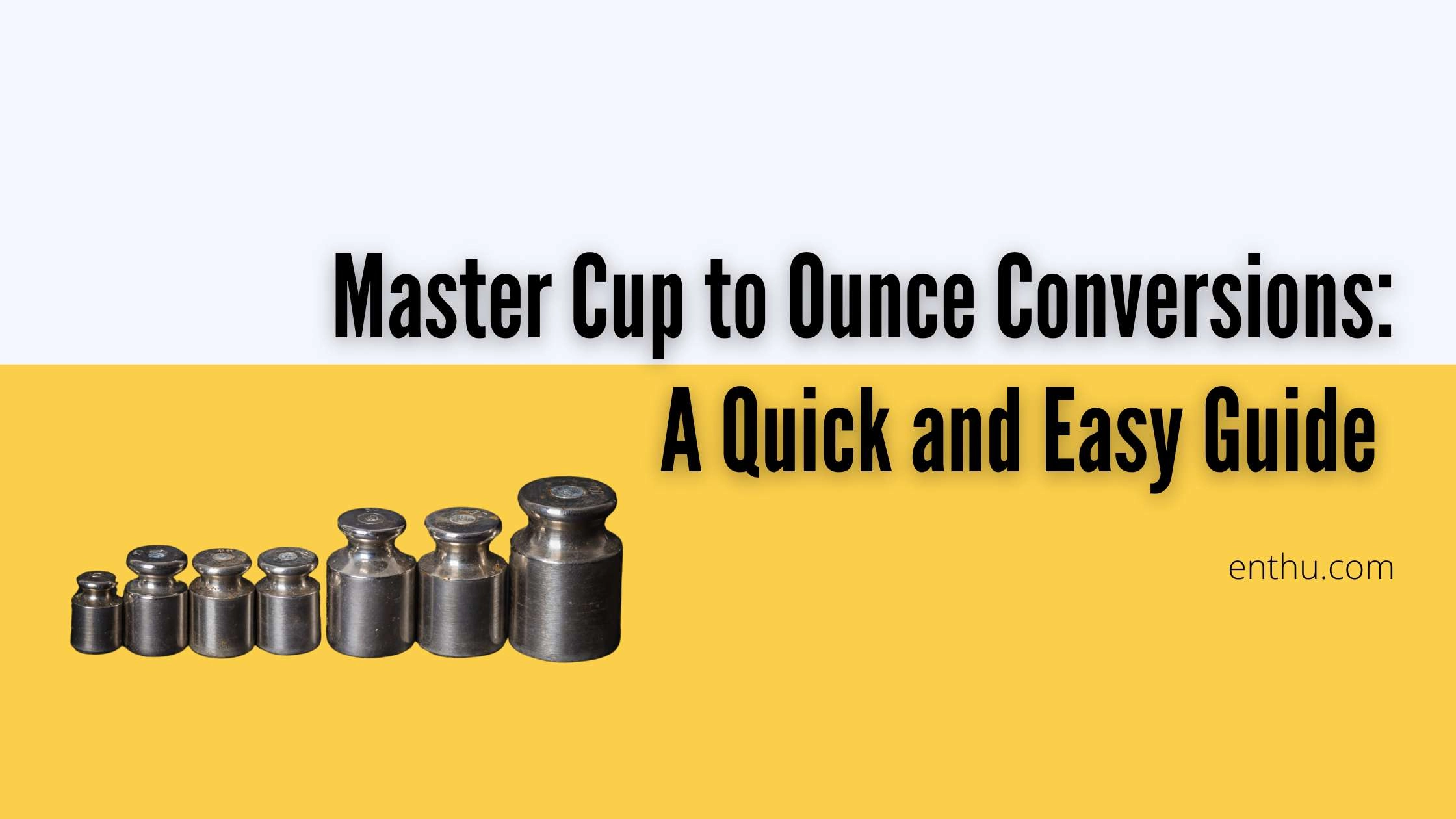



Comments